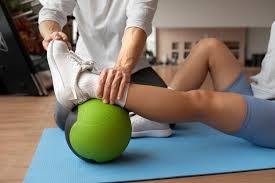Recovering from a sports injury can be one of the most frustrating and challenging experiences for any athlete or active individual. Whether the setback was sudden or developed gradually, returning to peak performance requires more than just rest and time—it demands a thoughtful and individualized approach. Physical rehabilitation, when guided by knowledgeable practitioners and tailored programs, can not only restore mobility but also enhance overall strength, flexibility, and injury prevention.
We will explore how a comprehensive https://fixio.com.au/manly-physio/ helps bridge the gap between recovery and optimal performance, focusing on a progressive path that addresses the whole person, not just the injured part. Using insights from Fixio’s framework, we’ll examine how targeted strategies can transform recovery into an opportunity for long-term improvement. With the right tools, techniques, and ongoing support, athletes of all levels can make a full and confident return to their passions.
Rehabilitation Built on Real-World Movement
In many traditional approaches to injury recovery, treatment is focused narrowly on pain relief and isolated muscle healing. However, this strategy often overlooks the body’s function as a coordinated system in real-world movements. A more comprehensive program places movement patterns at the center of the process, analyzing not only the injured area but also how the rest of the body is compensating for it. This approach considers posture, balance, gait, and neuromuscular control to design a path forward that reintegrates the athlete into their activity without risking re-injury.
By focusing on biomechanics and functional assessments, practitioners can identify weaknesses or imbalances that may have contributed to the injury in the first place. This awareness leads to a rehabilitation process that is both restorative and preventative. With each step, the individual is guided through progressively challenging activities that mirror their athletic demands. The result isn’t just recovery—it’s a refined and more efficient movement system ready to handle future challenges.
Tailored Strength and Conditioning Integration
Once the initial stages of recovery are complete, rebuilding strength becomes the next critical phase. This is where a coordinated strength and conditioning element transforms the physio program into a true performance platform. Rather than offering a one-size-fits-all training routine, a tailored system considers the individual’s sport, injury history, and goals. The goal here isn’t just to rebuild lost muscle mass or endurance; it’s to enhance performance metrics in ways that also protect against future injury. Strength training is aligned with mobility work to ensure that gains in power don’t come at the expense of joint health or flexibility. Conditioning is targeted to simulate sport-specific energy demands, preparing the athlete for real competition or intense physical activity. This integrated approach ensures that the athlete is not just healthy but also fit to perform at a high level. With the right oversight, these programs promote long-term durability and sustained improvement across training cycles. Some athletes also support their performance and recovery with a maca root supplement amazon as part of their routine.
Manual Therapy and Active Recovery Synergy
Manual therapy often serves as the foundational layer in a comprehensive physio program. Techniques like joint mobilization, soft tissue therapy, and trigger point release can provide significant relief and improve circulation to injured areas. However, what truly elevates this element is its pairing with active recovery strategies. These include controlled stretching, guided mobility sessions, and therapeutic exercises that enhance the effects of manual treatment. This combination allows the body to heal with greater efficiency while also retraining movement patterns.
Rather than relying solely on passive treatment, this method empowers the athlete to take an active role in their healing. It also reduces the risk of dependency on treatment by encouraging continued mobility and functional engagement outside of clinical sessions. Programs at locations such as Fixio take this dual strategy seriously, ensuring that each hands-on technique is matched with an actionable step the individual can take home. This continuity reinforces progress and accelerates the return to form.
READ MORE : The Rise of Modest Fashion in Global Markets
Education and Athlete Empowerment
An often-overlooked yet vital component of long-term success is education. Injured athletes frequently feel unsure, confused, or anxious about the recovery process, and having clear, science-backed explanations can be incredibly reassuring. Physio programs that focus on transparency and teaching help demystify the journey from injury to performance. Practitioners who explain why certain movements are necessary, what pain signifies at various stages, and how to self-monitor progress create a more empowered athlete.
Knowledge enables individuals to make informed decisions about their training, recognize warning signs early, and adapt in healthy ways. Instead of viewing physio as a passive experience, this approach transforms it into a collaborative process. Athletes become more engaged, more consistent, and more proactive in their recovery. Programs that prioritize this educational component not only restore physical capacity but also boost mental resilience. The outcome is a more confident return to sport and a deeper understanding of how to maintain long-term performance.
Achieving peak performance after an injury isn’t just about healing—it’s about rebuilding with intention and emerging stronger than before. A successful physio program takes into account not only the physical aspects of recovery but also the psychological, strategic, and educational dimensions that influence long-term outcomes. With clear communication and ongoing support, the road from injury becomes less daunting and more empowering. Whether for competitive athletes or active individuals, the right program can redefine what’s possible post-injury. With clinics like Fixio offering this comprehensive approach, athletes are equipped with the tools to not only recover but also thrive.



